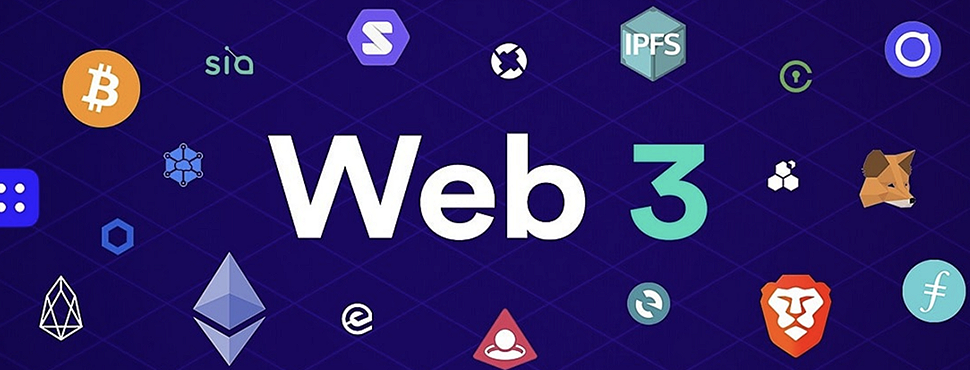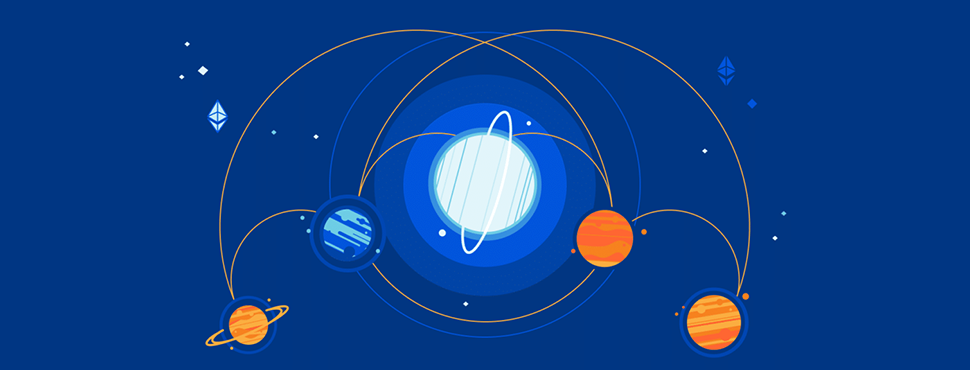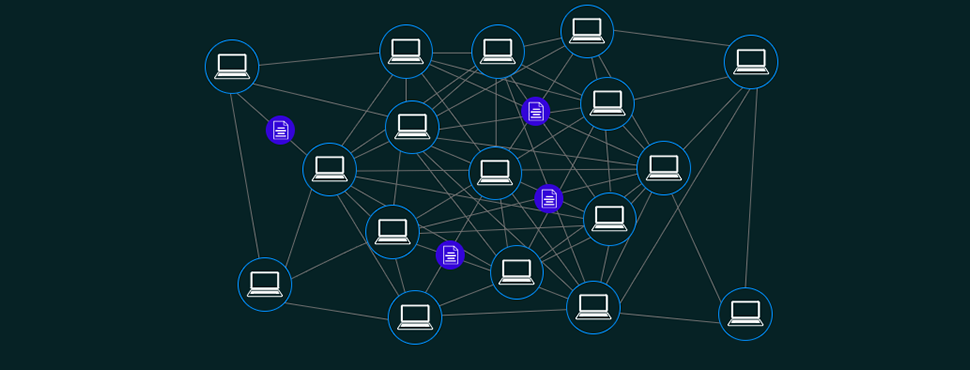share
Web3 represents the evolution of how technology and data are used, leading to a wave of disruptive innovation across the globe.
Blockchain technologies are increasingly enabling seamless transactions of a wide range of cryptocurrencies and enabling frictionless global trade. In the process, they are gradually making conventional fiat payment systems obsolete. International payments made through traditional solutions can take several days to clear, but many blockchains can do so in a matter of hours, if not minutes.
Financial institutions are grappling with the possibilities, and threats Web3 creates. Meanwhile, organizations, regulators, and the broader financial ecosystem are adapting to new digital assets, such as blockchains, distributed ledgers, non-fungible tokens (NFT), the Metaverse, and decentralized finance (DeFi).

Finance is one of the aspects impacted by Web3 because the future of finance will be decentralized. Before Web3, you would have to connect through your bank to make a transaction or to go to the bank to withdraw money. Web3 has allowed a whole new ecosystem to emerge.
In the past, national banks borrowed money from central banks. Now, with Web3, you can access your money from anywhere and anytime. You are your own bank, so you can allow loans as well as borrow money by using Web3.
Web3: It Gets Even More Interesting
In 2022 and beyond, DeFi and fintech will continue to converge, even more, causing an existential threat to traditional banks and insurers. The convergence of fintech with DeFi will open even broader opportunities beyond just the decentralization of monetary flow.
Web3 will further fuel these opportunities. Leveraging blockchain infrastructure, Web3 can offer open, decentralized database and compute layers as opposed to siloed servers or cloud instances. As users cruise the internet and use financial applications, the data from those interactions no longer solely lives on that single application’s server. It’s recorded on a shared and publicly accessible ledger.
As a result of open, transparent transactions and interactions, essential financial functions such as credit scoring, identity verification, and fraud prevention will be reconfigured, resulting in multiple benefits for consumers. Namely, Web3 shifts the balance of power back in favor of the consumer.

The ability for individuals and businesses to transact with entities across the globe (free from interference by central parties) sets the stage for a robust economic ecosystem online. This is particularly notable for content and entertainment creators, to whom Web3 offers novel and powerful ways to connect and engage with their audiences or fans.
There are also benefits for financial institutions. Consider insurers. Using blockchain’s distributed ledger technology, insurers can store and have access to a single claim’s information, negating the need to invest in gathering data from public and private domains.
Blockchain technology, coupled with distributed ledger technology, can also help banks reduce or eliminate the use of intermediaries. Specific areas in which banks can benefit highly from these technologies are payments, clearance and settlement systems, fundraising, securities, loans and credit, trade finance, and customer KYC and fraud prevention.

DeFi Supports the Financial Side of Web3
DeFi, one of the leading use cases of Web3, doesn’t rely on centralized financial intermediaries such as exchanges or banks. Instead, DeFi uses smart contracts, which automatically execute contracts on the blockchain.
Conventional financial services are based on a mechanism of centralized finance. For example, banks borrow money from depositors with interest and extend loans to borrowers in the deposit and loan business. In the foreign exchange business, banks exchange one currency for another.
In DeFi, these financial transactions are conducted among the users on the blockchain. One example of DeFi is a cryptocurrency exchange carried out through DEX (Decentralized Exchange).
In the case of exchange between such major cryptocurrencies as Bitcoin (BTC) and Ethereum (ETH), a cryptocurrency holder pairs and deposits BTC and ETH to a liquidity pool (like a “change machine”) at the DEX. Users who need ETH can gain ETH by giving BTC a fee to the “change machine.” The fee will be shared among those who deposit these cryptocurrencies.
Advantages of DeFi include:
- low operational costs and transaction fees due to the absence of a centralized intermediary;
- high transaction transparency since it operates based on smart contracts that anyone can refer to. In fact, as of November 2021, approximately 20 trillion yen worth of crypto assets were deposited in the DEX, and it will be growing.
DeFi has not limited itself to providing financial functions in crypto assets. For example, it includes NFT-Fi, where interest is earned by depositing NFTs. It also includes GameFi (also known as “Play to Earn”), where revenue is earned from games created using blockchain technology. These DeFi financial applications are rapidly developing and becoming essential to the overall Web3 ecosystem.

Understanding the Challenges of Web3 Payments
The Web3 conversations around payments ride on the assumption that adopters are united in goals and have reached an adequate literacy level. The current iteration of Web3, with its technicalities and jargon, is simply too complex for the masses.
For those in the payment business, having to do it all yourself may not make sense cost-wise. Web3-based payment systems are also vulnerable to volatility. Decentralized currencies without centralized control fluctuate wildly, resulting in high transaction costs and making cross-border trades difficult.
In theory, Web3 can seamlessly connect a merchant or e-commerce site with point-of-sale (PoS) devices and allow users and businesses to transact in cryptocurrencies using mobile wallets. However, mobile wallet operators remain cautious about its application. Grab Financial Group’s Chris Yeo said the fintech giant is “approaching crypto in a measured way by only working with platforms and players recognized by regulators.”
This includes “having the right KYC processes in place” to mitigate risks. This is a compelling point. Like Yeo, most businesses include blockchain and crypto in their conversations but still pivot to regulators (centralized institutions) for stability and compliance.

What’s a Cryptocurrency, and How Is It Used in Web3?
Earlier, we mentioned the need to align the incentives of independent blockchain network participants or nodes so that they can reach a consensus about the network. This is where cryptocurrency comes into play.
Cryptocurrencies are digital assets that are linked to particular blockchain networks. The Bitcoin network has bitcoin (BTC), the Ethereum network has ether (ETH), and so on. Each blockchain typically has one cryptocurrency that is natively integrated with the network and its consensus mechanism.
These are the cryptocurrencies that make up the “block rewards” given out to nodes for adding or validating new blocks on the chain – basically, the financial incentive for nodes to do their job well. Without crypto, node operators would have no reason to support blockchain networks other than their own goodwill.
With these native cryptocurrencies that represent digital value, blockchain networks are able to use consensus mechanisms to facilitate network operations like transferring assets or adding and validating new blocks. For example, sending bitcoin from one person to another will incur a transaction fee (sometimes called a “gas fee”) for using network resources like electricity and computing power.
Those transactions, batched into blocks, are added to the shared ledger by network nodes. Nodes are, in turn, compensated with cryptocurrency for their participation in the network.

Crypto Wallets: Store Assets and Connect to Web3
With all this crypto being exchanged to facilitate the operation of decentralized networks, people need a way to store their assets. Crypto wallets are designed to do just that. A crypto wallet is a way for Web3 users to store crypto, transfer it to others, pay transaction fees, and more.
Basically, if you’re interacting with Web3, you need a crypto wallet to do so. Why? Because Web3 relies on blockchain networks, blockchains rely on cryptocurrency to facilitate operations, and cryptocurrency needs crypto wallets to be stored in, sent from, and transacted with. Crypto wallets are like your passport to Web3. The only difference is that, unlike a travel passport, crypto wallets don’t have any central authority – like a government – managing them.
Metaverse and Crypto Potential for Financial Innovation
A concept of an immersive virtual world with the ethos of Web3 is the Metaverse and the usage of crypto. Most of the world’s population’s participation in the Metaverse virtual economy and transacting with crypto may still be in its nascent stages.
The Metaverse will require many features that Web3 enables. For example, the Metaverse can benefit from Web3’s tokenization to store and exchange value in a purely virtual context.
It may be years before the vision of the Metaverse is fully realized, as portrayed in Spielberg’s 2018 adaption of Ernest Cline’s Ready Player One (2011). But it is a space to watch and could be the mobile internet’s successor, as Mark Zuckerberg described.
Today, it is closely associated with augmented reality (AR) and virtual reality (VR), and Metaverse can be considered as a VR application of a digital twin world.
Crypto can be the foundation and standard self-sovereign financial system in the Metaverse, whereby financial ownership is via NFTs. The Metaverse is described as an open environment for open creation and transaction with a universal digital anonymous representation in the form of avatars.
NFTs offer unique digital representation and ownership of digital “things,” such as tweets, game assets, digital files, digital art, or digital real estate stored on a blockchain. Although not every digital item is NFT, digital transactions are gaining steady ground for product purchases and earning a living.
Digital luxury products such as a Gucci handbag sold on the Roblox online gaming platform have fetched a higher price than the real version, and play-to-earn blockchain games, or GameFi, allow players to earn crypto as a reward or to sell their NFTs in an open market.
Play-to-earn apps require internet users to have a crypto wallet like MetaMask or Coinbase (with cryptocurrencies such as Ethereum or USDT) and have a game character like a pet avatar which can cost several hundred dollars.
Players earn items or tokens through the completion of tasks by their game characters. Earned items or tokens can then be traded on crypto or NFT exchanges to cash out.









